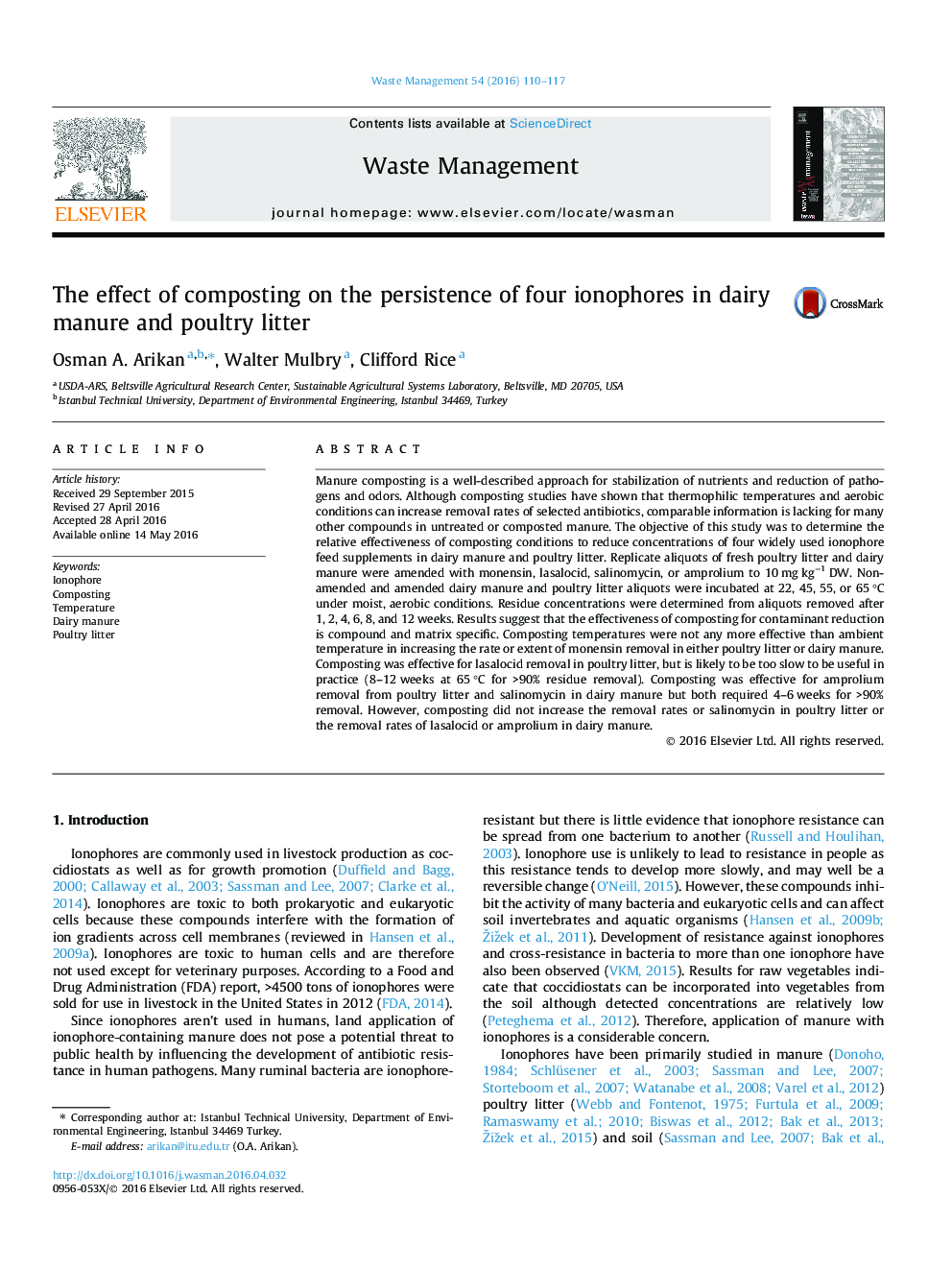| کد مقاله | کد نشریه | سال انتشار | مقاله انگلیسی | نسخه تمام متن |
|---|---|---|---|---|
| 6353609 | 1622632 | 2016 | 8 صفحه PDF | دانلود رایگان |
- The effectiveness of composting to reduce ionophores was investigated.
- Monensin, lasalocid, amprolium, salinomycin in manure and poultry litter were tested.
- Effectiveness of composting for reduction is compound and matrix specific.
- In manure, only salinomycin decreased more quickly at 45, 55 and 65 °C compared to 25 °C.
- Lasalocid and amprolium in poultry litter decreased more rapidly at 65 °C than at 25 °C.
Manure composting is a well-described approach for stabilization of nutrients and reduction of pathogens and odors. Although composting studies have shown that thermophilic temperatures and aerobic conditions can increase removal rates of selected antibiotics, comparable information is lacking for many other compounds in untreated or composted manure. The objective of this study was to determine the relative effectiveness of composting conditions to reduce concentrations of four widely used ionophore feed supplements in dairy manure and poultry litter. Replicate aliquots of fresh poultry litter and dairy manure were amended with monensin, lasalocid, salinomycin, or amprolium to 10 mg kgâ1 DW. Non-amended and amended dairy manure and poultry litter aliquots were incubated at 22, 45, 55, or 65 °C under moist, aerobic conditions. Residue concentrations were determined from aliquots removed after 1, 2, 4, 6, 8, and 12 weeks. Results suggest that the effectiveness of composting for contaminant reduction is compound and matrix specific. Composting temperatures were not any more effective than ambient temperature in increasing the rate or extent of monensin removal in either poultry litter or dairy manure. Composting was effective for lasalocid removal in poultry litter, but is likely to be too slow to be useful in practice (8-12 weeks at 65 °C for >90% residue removal). Composting was effective for amprolium removal from poultry litter and salinomycin in dairy manure but both required 4-6 weeks for >90% removal. However, composting did not increase the removal rates or salinomycin in poultry litter or the removal rates of lasalocid or amprolium in dairy manure.
Journal: Waste Management - Volume 54, August 2016, Pages 110-117
